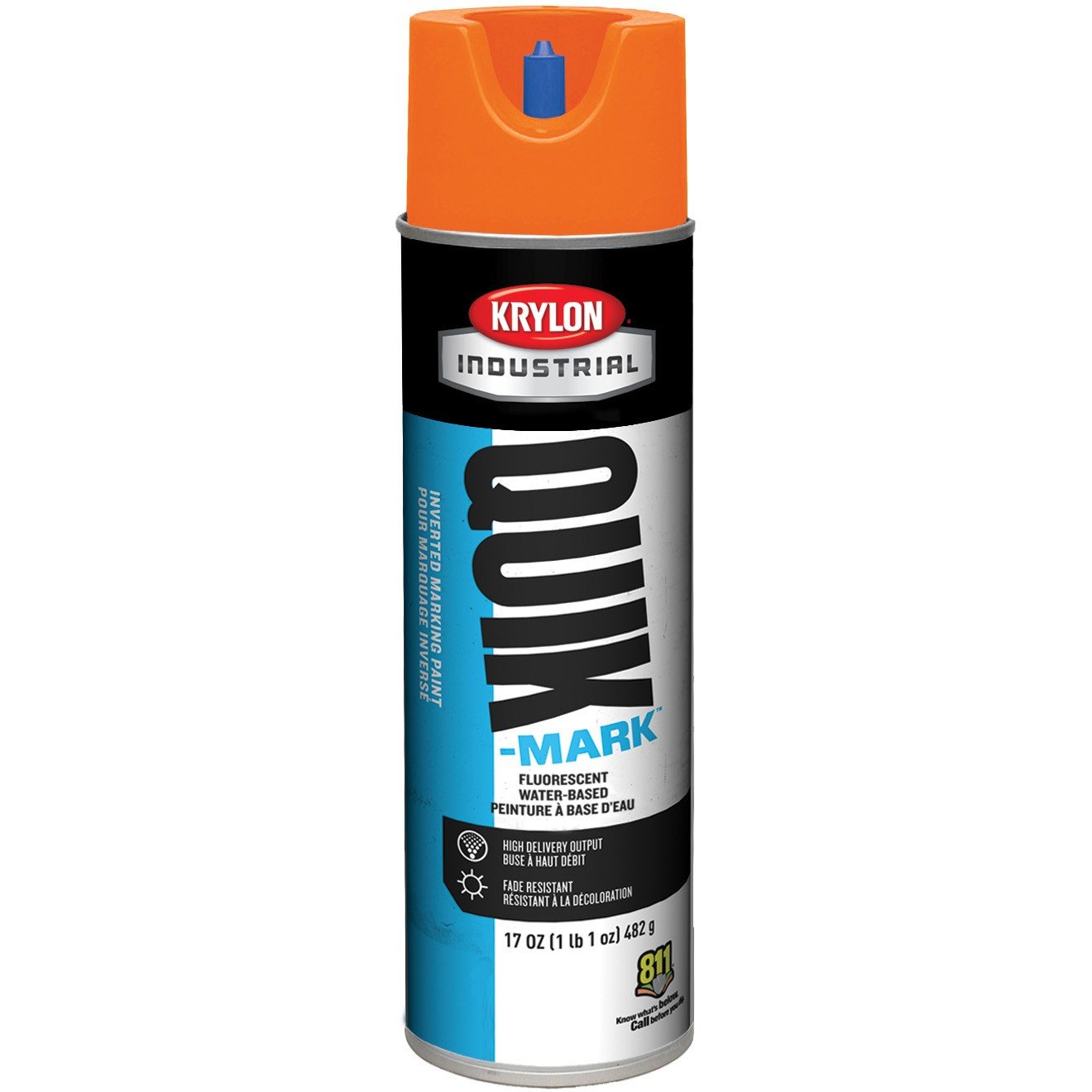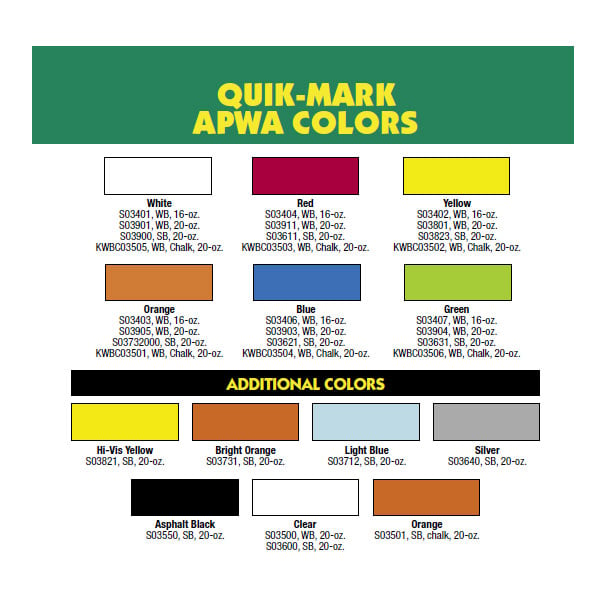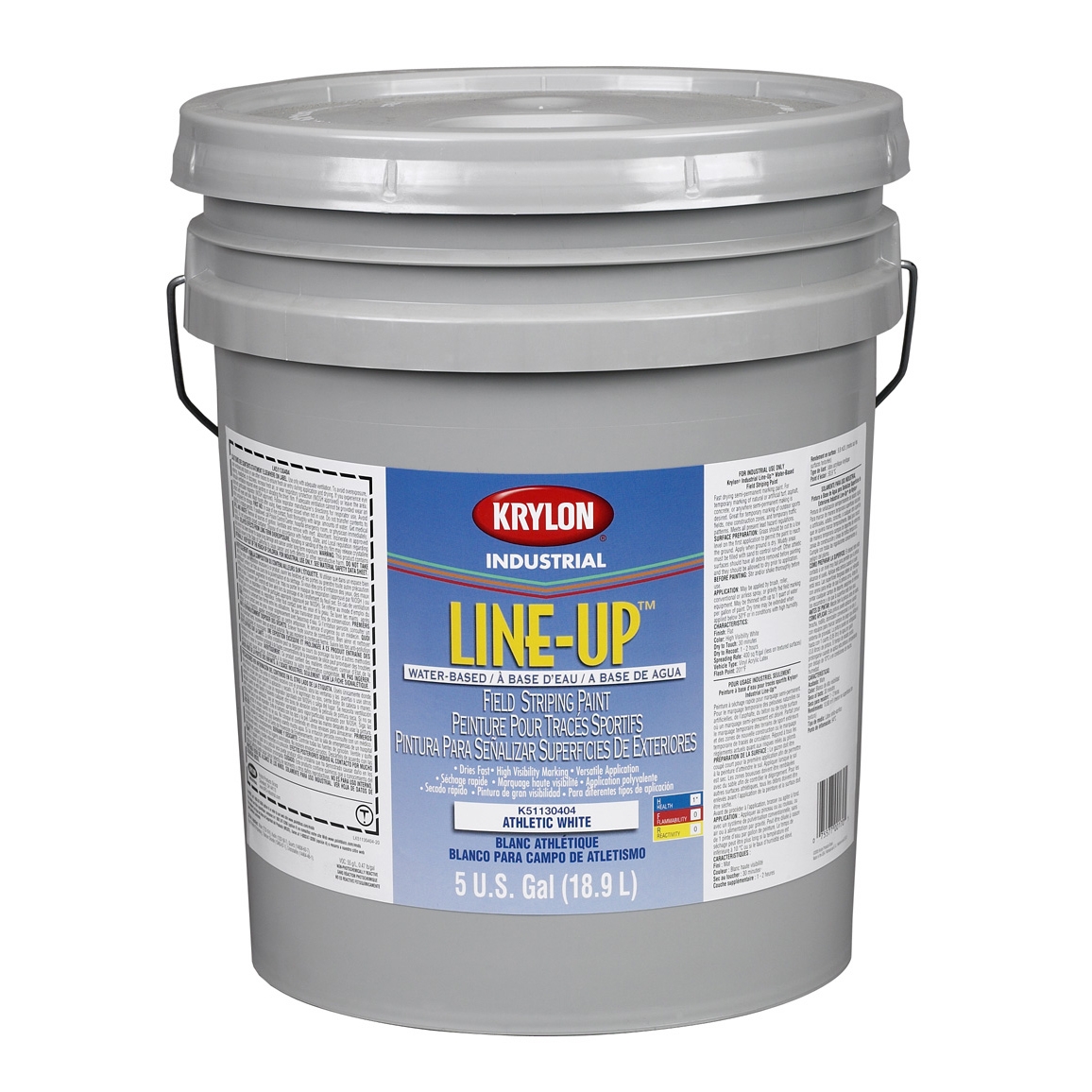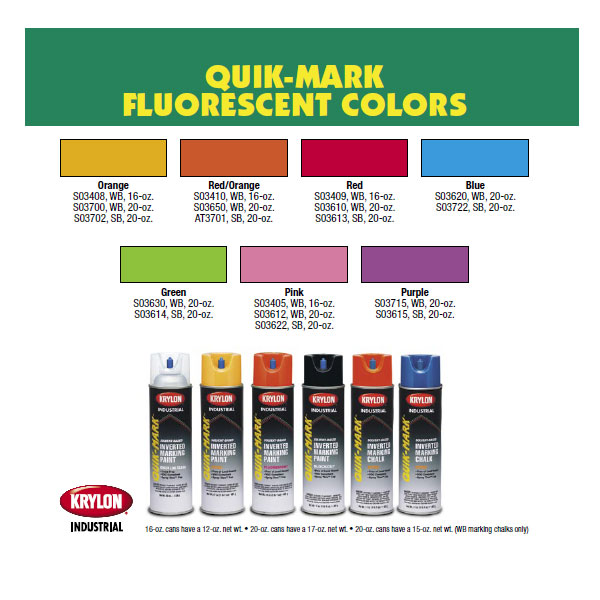Have you ever wondered why certain marking paint colors are used on roads, construction sites, and even athletic fields? These colorful markings not only catch our attention but also hold a deeper significance. Read to unravel their hidden meanings, and explore the fascinating world behind these seemingly simple pigments. Whether you’re curious about the bright orange lines on highways or the bold blue stripes on football fields, get ready to gain a whole new perspective on these colorful codes that shape our daily lives!
Introduction to Marking Paint Colors
First of all, marking paint colors is an essential tool in various industries. This includes construction and landscaping to sports and event planning. These vibrant hues serve a crucial purpose in providing clear and visible markings on surfaces such as roads, fields, parking lots, and more. And we offer a large selection of colors from best-selling industrial paint brands. Select from aerosol and bulk pail quantities from brands like Krylon, Ameri-Stripe, and Seymour.
In addition, many people may not realize that these marking paint colors have hidden meanings behind them. Each color has a specific purpose or significance which makes it an important element to consider when choosing the right marking paint for your project. And with over 10 different colors to choose from, there is paint perfect for your next project.
And, in this section, we will delve deeper into the introduction of marking paint colors and their meanings. By understanding the significance of each color, you can make informed decisions about which marking paints will best suit your needs. And marking paint color options range from fluorescent to APWA colors. APWA stands for American Public Works Association. A color that meets APWA standards complies with public works and utilities standards for a variety of jobs.
The Color Code System
Most of all, before we dive into the individual meanings of each color, it’s essential to understand the common color code system used for marking paints. This system uses a set of standardized colors to identify different types of markings.
For example:
– White is for proposed excavation or for pre-marking outer limits.
– Yellow is to indicate gas and oil.
– Blue signifies potable water.
– Red is for electric power lines and lighting cables.
– Green represents sewers and drainage.
– Orange indicates communication or fiber lines.
– Pink identifies temporary survey markings.
-Purple is for reclaimed water, irrigation, and slurry lines.
And these are just some examples of how different colors are assigned specific meanings in the color code system. Familiarizing yourself with this system can help you better understand the intended purposes behind each marking paint color. And remember to call before you dig. If you have questions, contact your local or state government. It is important to know what different colors mean prior to starting any project.
The Meanings of Different Marking Paint Colors
1. White
White is a versatile marking paint color used for various purposes, making it one of the most commonly used colors in the industry. And is for temporary markings, survey lines, and layout markings on construction sites. White also covers up existing markings or lines that need to be removed or changed.
2. Yellow
Yellow marking paint marks gas, oil, steam, petroleum, or gaseous materials.
3. Blue
Blue marking paint signifies potable water.
4. Red
Red is a high-visibility color that represents emergencies and fire protection. It also marks electric power lines, cables or conduits, and lighting cables.
5. Green
Green marking paint marks sewers, drainage facilities, or other drain lines.
6. Orange
Orange marking paint is for maintenance areas or traffic zones. This color is seen in construction sites and road work zones to alert drivers of potential hazards or road closures. It also marks areas where maintenance work is carried out. And orange marking paint marks communication, alarm or signal lines, cables or conduits, and fiber.
7. Pink
Pink marking paint is for temporary survey markings.
In addition to these standard colors, there are also fluorescent and reflective marking paints that provide increased visibility in low-light conditions. These colors mark safety purposes, such as marking bike lanes and pedestrian crossings on roads. And the popular brand Krylon includes marking paint series like Line-Up and Quik-Mark in standard and fluorescent colors. Most of all, apply any color of marking paint with a marking wand or striping machine. These provide a consistent and professional-looking straight line each time.
Why are Marking Paint Colors Important?
While marking paint colors may seem like a trivial detail, they play an essential role in various industries and applications. From construction sites to roadways, sports fields to parking lots, marking paint colors serve as visual cues that convey vital information and help maintain safety and organization. Further, in this section, we will discuss the importance of marking paint colors and how each color has a specific meaning.
1. Safety Purposes:
Most of all, one of the primary reasons why marking paint colors is crucial is for safety purposes. Bright and high-visibility colors such as red, orange, yellow, and green mark potential hazards or areas that require caution. These fluorescent colors are noticeable from a distance and serve as a warning sign for workers or passersby to proceed with care.
Also, on construction sites, orange marks communication, alarm, or signal lines. Or mark areas where heavy machinery is operating. Similarly, yellow is often used for general caution signs or to designate restricted areas on roads or in buildings. Without these color-coded markings, accidents could occur due to a lack of clear communication about potential hazards.
2. Identification:
Another significant reason why marking paint colors is important is for identification purposes. In many settings such as warehouses or industrial facilities, different equipment or materials may need to be labeled for easy identification. Each color can represent a specific type of equipment or material, making it easier for workers to locate what they need quickly.
For instance, blue markings may indicate potable water while red might signify electric lines or emergency equipment. By using a color-coding system, workers can easily identify and locate the necessary tools or materials without wasting time searching for them.
Compliance and Paint Standards
3. Organization:
Also, marking paint colors is essential for maintaining organization in various settings such as parking lots, sports fields, or warehouses. In these areas, different zones or sections use colors for specific purposes.
For example, in a parking lot, blue markings may indicate handicapped parking spaces while yellow might designate loading zones. On a sports field, white markings might outline the boundaries of the playing area while orange might mark penalty boxes or other designated areas. These color-coded markings help maintain order and prevent confusion in busy environments.
4. Standardization:
In industries such as construction and road maintenance, marking paint colors are crucial for standardization purposes. Government agencies often have regulations and guidelines for which colors should be used to convey certain information on construction sites or roadways. While most comply with APWA color standards. This helps ensure public works at both the local and state levels understand the same markings.
In addition, by following these standardized color-coding systems, workers can quickly recognize and understand the meaning of each marking without having to learn a new system at every job site. This helps ensure consistency and accuracy in conveying important information through markings.
Common Uses
Furthermore, marking paint colors have a wide range of uses in various industries and are not just limited to construction sites. In fact, these colors have become an essential tool for many businesses and organizations due to their practicality and effectiveness in communicating important information.
1. Construction: One of the most common uses of marking paint colors is in the construction industry. These vibrant, high-visibility colors are used to mark areas of excavation, identify utility lines, designate safety hazards, and indicate where specific materials should be stored. While the bright and bold colors make it easy for workers to spot and follow markings. And this ensures safety protocols are followed on-site.
2. Landscaping: Marking paint colors are also widely used in landscaping projects. From marking boundaries for flower beds to designating paths or outlining lawn edging, these paints help landscapers achieve precision in their work. Additionally, they are used to highlight irrigation systems or underground cables for future reference.
3. Sports fields: Have you ever wondered how sports field groundskeepers manage to create perfectly straight lines for the yard markers? Well, marking paint colors plays a crucial role here too! These paints make it effortless for groundskeepers to lay out accurate markings that will withstand heavy foot traffic during games. And using striping machines and marking wands makes field lining easy. They also provide consistent and professional-looking results with each application.
4. Parking lots: Another common use of marking paint colors is in parking lots. Different colored lines and symbols can be seen on the pavement indicating handicap spots, loading zones, fire lanes, or no-parking zones. This helps drivers navigate through parking lots safely while also ensuring compliance with parking regulations.
More Uses for Marking Paint
5. Event planning: For event planners, marking paint colors is a handy tool for organizing and setting up large events. They also designate areas for vendors, create paths for attendees, or mark off restricted areas. With the help of these paints, planners can easily transform an empty space into an organized and visually appealing venue.
6. Surveying: Surveyors also use marking paint colors to establish boundaries and plot out land parcels. The bright colors make it easy for them to identify specific points on a map and accurately mark them in the field. And the best-selling Krylon Quik-Mark series of marking paint is fast-drying and adheres to most surfaces. Select from solvent or water-based technologies.
7. Warehouse management: In warehouses, marking paint colors designates storage areas for different products or equipment. This helps workers quickly locate items and maintain organization within the warehouse.
8. Utility companies: Utility companies also rely on marking paint colors to indicate where their underground pipes, cables, or wires are located. Therefore, this is especially important for emergency repairs and maintenance work to avoid damaging these essential systems. And utility companies often comply with local and state APWA standards.
Moreover, in all these industries and more, marking paint colors plays a vital role in improving efficiency, increasing safety, and maintaining organization. Their versatility makes them an invaluable tool for businesses of all kinds.
Conclusion
In conclusion, understanding the hidden meanings behind marking paint colors can be a valuable tool for both individuals and businesses alike. From identifying potential hazards to streamlining organizational processes, this knowledge can have far-reaching benefits. With this in mind, by utilizing these tips and tricks, you can ensure that you are using marking paint effectively and efficiently in any situation. So next time you see those colorful lines on the ground, remember that there is more than meets the eye when it comes to marking paint colors.










